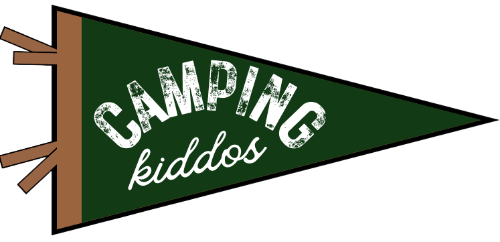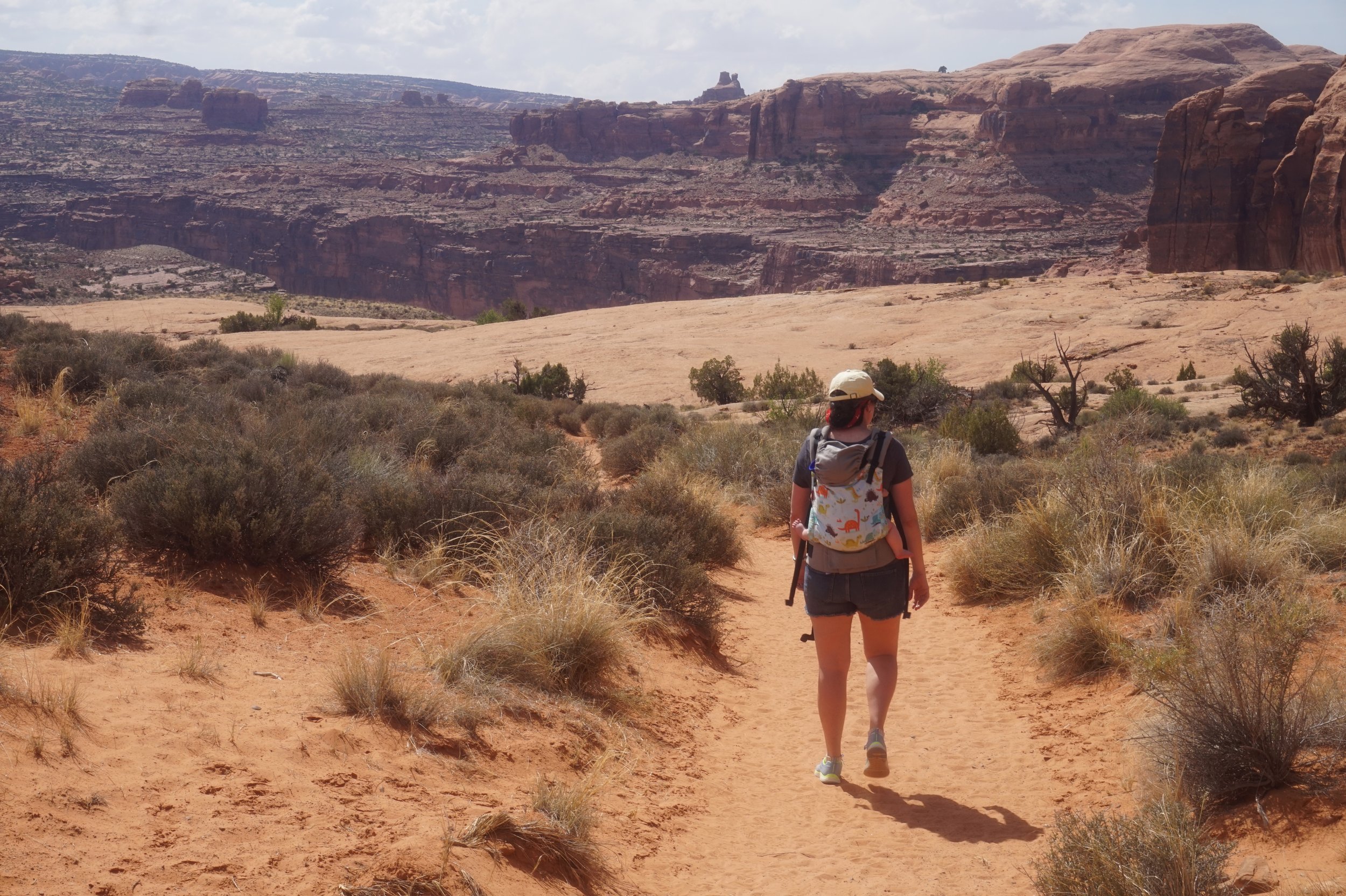Tips and Tricks for Hiking with a Toddler
Do you love getting outside but the idea of hiking with a toddler is intimidating?
I know that feeling all too well, and I’ve made plenty of mistakes in my quest to get my kids out into nature from a young age.
In fact, on a press trip to Lake Lure, North Carolina, when my daughter was only about 15 months, I took her out for her first hike and made every mistake in the book.
When we finally emerged from the trail several hours later, hot, tired, hungry, and sort-of lost, I knew that I was going to have to nail down a better method than just showing up and hoping for the best.
Thankfully, you can learn from my mistakes below—I’m happy to report that my littles and I now hop onto trails across the U.S., and I’ve come a long way since that first disastrous experience.
Here’s everything you need to know to feel confident and prepared as you introduce your little one to the joys of the outdoors!
This post contains affiliates. If you purchase through the links below, I will receive a small commission at no additional charge to you.
Hiking with a Toddler: What You Need to Know
1) Get a day pack.
Not a purse. Not a hip pack.
Hiking the Bluff Trail at Congaree National Park with my day pack
You’re going to need a full day pack.
When hiking with toddler, gone are the days you can hop on the trail with a water bottle and some granola bars and have a good time.
You want to be prepared. After all, if something goes wrong on a hike when you’re with another adult, that’s a very different situation than if something goes wrong on a hike when you’re alone with a young child.
Whenever I’m with our kids, I carry my Osprey Skimmer 28L pack, which might look like overkill at first glance.
However, I carry everything we might need if we were to get hurt or stranded overnight including a full water bladder, plenty of food, a tarp, an emergency bivvy, a small first aid kit, and a jacket for me.
(My kids are now old enough that they can carry their own day packs and materials, but when you’ve got a toddler, you’ll be doing all of the hauling.)
2) Be prepared to go very, very slowly.
Exploring at Palmetto Islands County Park, one of the best hikes in Charleston, SC!
Toddlers have the cutest, fattest little legs!
While their stature is great for their growth track, it’s not so great for covering great swaths of a trail.
Plus, toddlers are innately curious and will want to investigate every rock, leaf, and piece of dirt (and probably try to eat it!).
Encourage this exploration as long as it is being done safely.
These are the moments that will stick with your child and show the entire family that nature is a place of wonder and interest.
I had a mom friend tell me once, “Some days, you might not even get out of the parking lot. And that’s fine!”
3) Pack a cloth baby carrier.
Hiking Bowtie Arch Trail near Moab, Utah, with our younger kiddo in tow
While most of your hiking with a toddler will be slow progress on the ground, there will inevitably be a time when your little one needs a break.
PIN ME!
We love a soft baby carrier for this reason, and, when our kids were little, we always had one in our day packs.
In fact, our kindergartener just stopped being able to fit into our toddler/preschooler carrier, and I’m more than a little sad about it!
Now, he wants us to hold him when his legs tire out, but we’re trying to work on his stamina.
Thankfully, your toddler will still be able to fit in the carrier for short rests on the trail and for nap time.
We loved our Tula carrier for hiking. It was lightweight, washable, and highly adjustable so both my husband or I could wear it.
The padded shoulders and waist belt help distribute the child’s weight well.
You might be wondering, “What do I do with my day pack when I’m baby wearing on the trail?”
We would double wear the baby carrier and day pack with one on the front and the other on the back.
There are other options, such as a fully structured toddler hiking bag (see below) if you’re committing to much longer, more frequent, and more strenuous hikes.
4) Do your research.
Check the weather, and aim for a moderate day without any threat of inclement weather.
Hiking with toddlers can be sweaty, exhausting affairs even when everything goes right, but adding in a scary thunderstorm or intense winds can quickly derail a trip.
Case in point: we once had a sudden thunderstorm roll up on us when we were adventuring on an isolated island near St. Pete Beach, Florida, and we were left without anywhere to shelter in the near vicinity.
The thunder was so loud that my now-6 year old still talks about it!
It’s also important to see what others think about the trail you’re planning to visit.
While a national or state park website might list the trail as “easy,” you don’t know how recently that blurb was written.
Check on up-to-date reviews on a website like AllTrails or Kamoot before you leave the house.
This will ensure that you know about any changes to the trails, access, or facilities.
5) Start close to home.
While it might be tempting, don’t do your toddler’s first hike while on vacation.
You’re already out of your element while on vacation, and you’re likely exploring a new environment right alongside your child for the first time.
Instead, find a trail near to your home and plan an easy afternoon hike one weekend.
This will be the time to see how your child responds to sustained walking, being in the woods, and more.
Slowly increase the length of time you’re on local trails. Then, start planning your next outdoor vacation!
6) Invest in the proper gear.
While a good day pack is a great starter piece, I know that many avid hiking families opt for a toddler hiking carrier instead.
These structured packs, like the Osprey Poco Plus, combine the packing ability of a day pack with the hands-free accessibility of a toddler carrier.
On the plus side, these carriers are the best of both worlds and will make for much easier long hikes.
On the downside, the carriers are much more expensive than a day pack + soft sided toddler carrier, and there’s more of a learning curve on how to use them.
No matter what pack(s) you end up choosing, you’ll want to carry the right stuff along with you, including:
at least 2 cups (0.5 liter) of water per adult per hour, and about 1 cup (0.25 liters) of water per child per hour (more if you’re hiking in hot, dry climates)
Plenty of snacks
a whistle
tarp or small tent
flashlight/head lamp
map of the area/trail
bug spray and/or After Bite
sunscreen
You’ll also want to make sure that adults are wearing hiking boots for proper traction.
You don’t necessarily have to buy hiking boots for your toddler, but they might be a good idea if you plan to hike frequently.
>> Here are our suggestions for the best toddler hiking shoes! <<
If you don’t opt for hiking boots for your toddler, ensure that his/her footwear has a closed toe and heel, and that socks are snug.
Need more ideas on what an outdoor kiddo might like? Check out the best camping gifts for kids here!
7) Don’t underestimate the power of the trail snack!
A trail snack makes everything better!
When my son began to understand what hiking was, he was not a fan.
He got hot.
He got tired.
He got dirty.
But, then, we introduced him to the trail snack!
In reality, a trail snack is any snack that you pack in your day pack, but we like to really get the kids excited about their trail snacks.
While we’re on the trail, our kids can have access to any of the snacks that we’ve brought.
This might mean that some toddlers will snack, bite-by-bite, during the entire hike.
And that’s okay.
Take this inspiring family’s story of hiking the Pacific Crest Trail with 3 young kids: the journalist points out several instances where the kids hike with pretzels or granola bars in hand.
My kids love hiking now, and that’s in no small part to the trail snacks that they know await them.
8) Embrace the dirt.
This was the least amount of dirt our kid had on her outfits during our 3 days in Moab.
Your kid might be like my younger one and be positively allergic to dirt during the toddler phase.
Or, they might be like my older kid who routinely tried to swim in mud puddles.
Wherever your toddler is on that scale, let go of any ideas of pristine clothing while out hiking.
This isn’t a space for saying things like, “Oh, be careful with that shirt! It’s brand new!” or “Don’t wipe your hands on your pants!”
Get inexpensive shirts and pants from a thrift store or big box store just for your family hikes.
If they get stained, wrinkled, or messy, then you know you had a great time.
9) Have a pay-off.
Our then-2 year old enjoys a snack at Riley Moore Falls near Westminster, South Carolina
Once you motivate your toddler to get started on a hike, it helps to be able to convince them this seemingly aimless walking through the woods is for a good cause.
That’s why we always made sure our hike went somewhere.
The most obvious choice is a waterfall or other splashable water feature as it’s the perfect halfway point to a hike.
Other options would be to start and end your hike near a playground (with the playground being the ultimate reward), have a picnic at a scenic overview mid-way through the hike, or similar.
10) Add some education into the hike.
Our toddler finds a leaf on his scavenger hunt bingo page while hiking in the Francis Marion National Forest near Charleston, SC
There are SO many things to learn about on a hike, even for toddlers!
Grab some colorful nature pamphlets (like this one about bugs and slugs, for example, one of my kids’ favorites) and make a big deal of it when your child finds a new crawly thing.
You could also play I Spy as you walk slowly along.
Count trees or squirrels or clouds.
Sing your ABC’s loudly.
See how many colors you can find on the trail.
You might also consider a slightly more structured activity.
We are big fans of scavenger hunts and bingo, so we will often print out a nature based worksheet and encourage our kids to find everything while we walk.
Find fun ways to make your hike more engaging and enriching, and your kids will be begging to head back out into the woods. For even more ideas on how to make hiking fun for the entire family, check out my comprehensive guide!
Get inspired! These best hikes near Greenville SC are great for families!
Remember: the point isn’t to log the most miles! If you and your child is out having fun, then that’s successful hiking with a toddler.










